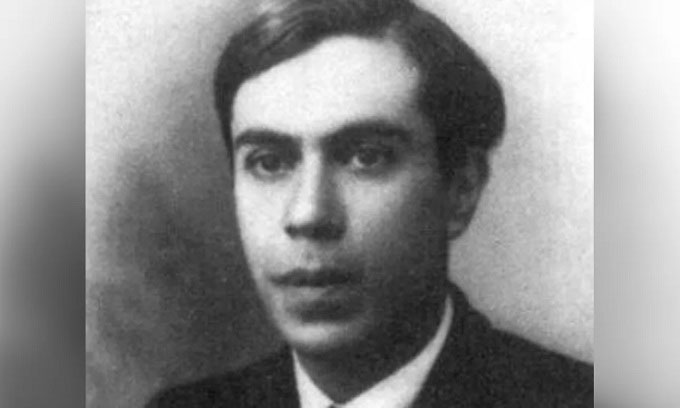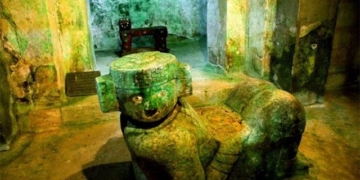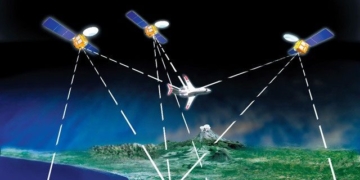Once ranked alongside Galileo and Newton, physicist Ettore Majorana vanished while achieving significant milestones in his career.
Ettore Majorana, born in 1906, was an Italian physicist renowned for his important contributions to nuclear physics and quantum mechanics. He was born in Catania, Italy, and studied at the University of Naples Federico II and La Sapienza University in Rome.
From a young age, Ettore Majorana exhibited the qualities of an outstanding mathematician or physicist. Born in 1906 in Sicily, Majorana graduated high school early and moved to Rome to study engineering and physics under the guidance of Nobel Prize-winning scientist Enrico Fermi. Fermi was awarded the Nobel Prize for proving the existence of new radioactive elements created by neutron radiation and for participating in the discovery of nuclear reactions caused by slow neutrons. He was greatly impressed by Majorana, who later became his colleague, according to IFL Science.

Ettore Majorana is a young physicist highly regarded by Fermi. (Photo: Kanijoman).
“There are a few groups of scientists in the world. Those in the second or third tiers try their best but never get too far. The first tier is comprised of those with crucial discoveries that are essential for scientific advancement. But there are also geniuses like Galileo and Newton. Majorana is one of them,” Fermi shared.
In his brief career, Majorana achieved a remarkable number of accomplishments. He could have even won a Nobel Prize for the discovery of the neutron. In fact, the prize for this discovery was awarded to James Chadwick in 1935. In 1931, Irène Curie and Frédéric Joliot conducted experiments with radiation from beryllium bombarding paraffin wax, which pushed protons out of hydrogen atoms, causing them to shift and bounce back at high speeds. The pair believed their experiment proved the existence of the photon particle, which was the only neutral particle they knew of at the time. However, Majorana and shortly thereafter Chadwick recognized that the mysterious particle must be neutral and have a mass close to that of a proton to push protons.
Majorana wrote to Fermi about his hypothesis, and Fermi advised him to write a paper, but that never happened. Chadwick had time to conduct his own experiments and published his findings. Nevertheless, Majorana had an illustrious career, having worked with Bohr and Heisenberg as well as Fermi, developing Heisenberg’s nuclear theory and predicting the Majorana fermion, which was observed in 2014.
In 1938, Majorana disappeared. On March 25, he left a note for Antonio Carrelli, the director of the Naples Institute of Physics, informing him that he would not be returning. He later sent a second letter from Palermo, stating he would return the following day but had no intention of continuing to teach. However, Carrelli was very concerned and contacted Majorana’s family. The police confirmed that Majorana traveled from Palermo to Naples by steamship on March 25, but no one had seen him since.
One theory regarding Majorana’s disappearance is that he committed suicide. However, others argue that Majorana’s savings were drained a week before he vanished, suggesting he may have decided to move abroad or join a monastery. There is even speculation that Majorana was assassinated by the Nazis out of fear that his work could lead to the development of an atomic bomb before theirs.
In 2008, a witness called into an Italian television show called Chi l’ha visto (Who Has Seen Him), claiming to have a photo of Majorana. This prompted the Rome Justice Department to reopen the case. Italian police analyzed the photo and found similarities between the image of a man over 50 named Bini and earlier photos of Majorana.
This information convinced the Rome Justice Department to initiate a separate investigation into the case, in which the Carabinieri (Italian military police) analyzed the photo and found similarities with an image taken around 1955 in Argentina compared to earlier photos of Ettore Majorana.
In February 2015, the Rome Justice Department announced that Majorana was indeed alive after disappearing from Naples. He had moved into hiding in South America, where he lived until his death. The police are confident that Majorana remained in contact with his uncle, physicist Quirino Majorana, discussing scientific topics under the name WG Conklin. A postcard from Quirino was found in Bini’s car.
“Ettore Majorana, a great physicist ranked alongside figures like Newton and Einstein, mysteriously disappeared in 1938 but was alive from 1955 to 1959 in the city of Valencia, Venezuela,” read the final message from the Rome Justice Department.
Why did Majorana leave his job and family to live in seclusion elsewhere in the world? Some family members and researchers believe that Majorana sought to escape due to fears of the moral and psychological consequences of his work, which contributed to the creation of atomic weapons, leaving him feeling powerless, leading to this negative decision.
- Strange about the white ethnic group in China, forbidden to marry foreigners: The reason is quite surprising!
- The mystery of the Baalbek temple, where modern technology cannot replicate the construction process!
- There is a strange river in Russia, with no water but still makes gurgling sounds year-round.


















































